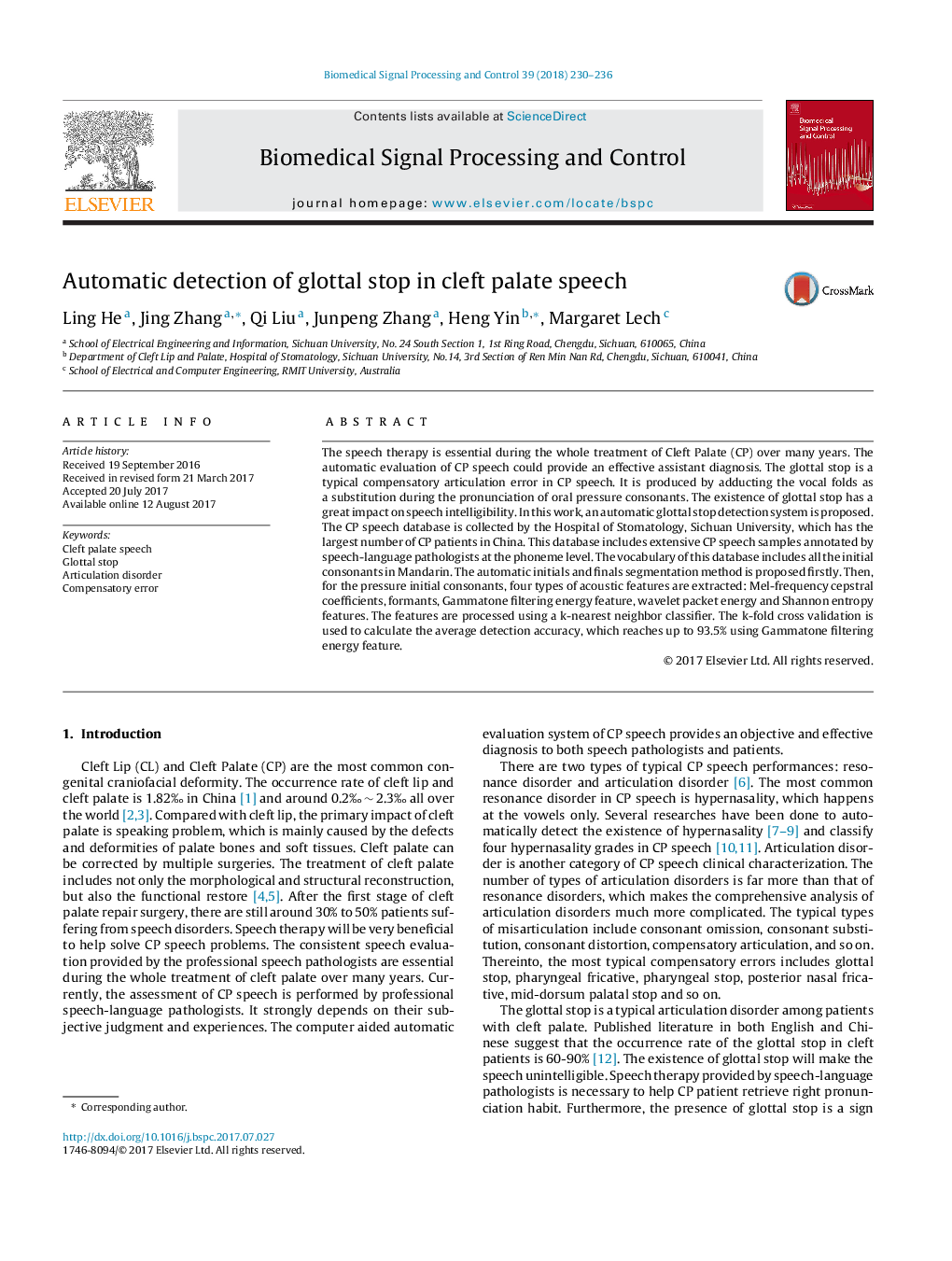| Article ID | Journal | Published Year | Pages | File Type |
|---|---|---|---|---|
| 4973482 | Biomedical Signal Processing and Control | 2018 | 7 Pages |
â¢First work to automatically detect glottal stop in cleft palate speech.â¢Applying an extensive size of cleft palate speech database.â¢An automatic initial consonants and finals segmentation method is proposed.â¢Four acoustic features are applied to identify glottal stop
The speech therapy is essential during the whole treatment of Cleft Palate (CP) over many years. The automatic evaluation of CP speech could provide an effective assistant diagnosis. The glottal stop is a typical compensatory articulation error in CP speech. It is produced by adducting the vocal folds as a substitution during the pronunciation of oral pressure consonants. The existence of glottal stop has a great impact on speech intelligibility. In this work, an automatic glottal stop detection system is proposed. The CP speech database is collected by the Hospital of Stomatology, Sichuan University, which has the largest number of CP patients in China. This database includes extensive CP speech samples annotated by speech-language pathologists at the phoneme level. The vocabulary of this database includes all the initial consonants in Mandarin. The automatic initials and finals segmentation method is proposed firstly. Then, for the pressure initial consonants, four types of acoustic features are extracted: Mel-frequency cepstral coefficients, formants, Gammatone filtering energy feature, wavelet packet energy and Shannon entropy features. The features are processed using a k-nearest neighbor classifier. The k-fold cross validation is used to calculate the average detection accuracy, which reaches up to 93.5% using Gammatone filtering energy feature.
